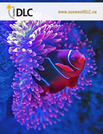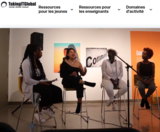
Biology 30 - The Circulatory System Part 8
- Subject:
- Biology
- Author:
- Distance Learning Centre
- Date Added:
- 04/12/2018

Biology 30 - The Circulatory System Part 8

Healthline is a great A-to-Z resource for various physical and mental health issues, emphasizing expert content with genuine caring. And you don't need to be under the weather to benefit from this website.
In addition to providing timely, modern health advice, Healthline is a beautifully presented and information-packed resource for your overall health and wellness. At Healthline, you'll find nutritious recipes, workout ideas, fitness and eating tips, and the latest in health news.

"Human rights stories are all around us. We explore contemporary and historic human rights stories, from Canada and around the world."
This resource from The Canadian Museum for Human Rights explores numerous stories about Indigenous Perspectives (treaty education, witness blanket, UN Rights of Indigenous, Mincome, reconciliation, veterans, etc. ), Social Justice (BLM, misogyny, racism, genocide, antisemitism, Holodomor, refugees, etc.)
Each story contains information, artifacts, images, and questions to guide your thinking. It also links to related stories for further exploration.

Introducing TakingITGlobal's official HIV/AIDS Youth Guide to Action! This comprehensive guide contains inspiring stories and useful resources for youth; all the necessary tools to help carry out your project, raise awareness, and help stop the spread of HIV/AIDS.
Présentation du Guide officiel de TakingITGlobal sur l'action jeunesse contre le VIH/sida ! Ce guide complet contient des histoires inspirantes et des ressources utiles pour les jeunes ; tous les outils nécessaires pour mener à bien votre projet, sensibiliser et contribuer à stopper la propagation du VIH/sida.

Students simulate the spread of a virus such as HIV through a population by "sharing" (but not drinking) the water in a plastic cup with several classmates. Although invisible, the water in a few of the cups has already be tainted with the "virus" (sodium carbonate). After all the students have shared their liquids, the contents of the cups are tested for the virus with phenolphthalein, a chemical that causes a striking color change in the presence of sodium carbonate. Students then set about trying to determine which of their classmates were the ones originally infected with the virus.

Students learn how viruses invade host cells and hijack the hosts' cell-reproduction mechanisms in order to make new viruses, which can in turn attack additional host cells. Students also learn how the immune system responds to a viral invasion, eventually defeating the viruses -- if all goes well. Finally, they consider the special case of HIV, in which the virus' host cell is a key component of the immune system itself, severely crippling it and ultimately leading to AIDS. The associated activity, Tracking a Virus, sets the stage for this lesson with a dramatic simulation that allows students to see for themselves how quickly a virus can spread through a population, and then challenges students to determine who the initial bearers of the virus were.